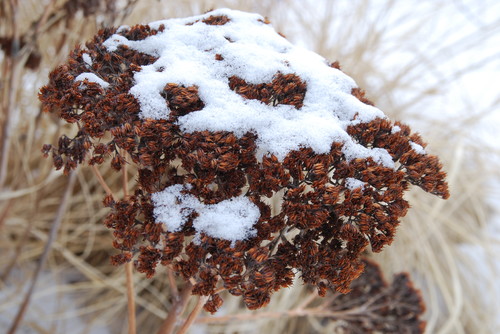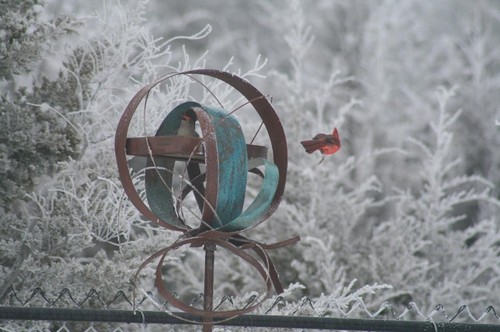4 Reasons to Celebrate Your Garden in Winter
For many, winter is a period to slog through and a necessary evil — snow interferes with our travel plans, while windy days send chills deep into our bones. And yet, winter is a miracle. Without it, a lot of our plants and wildlife simply wouldn’t thrive. Here are four reasons to praise winter.
1. Plants need the rest.
Let’s use herbaceous perennials as an example — grasses, sedges and flowering plants that die back to the ground each fall and come up again in spring. After spending a lot of energy making flowers to attract pollinators and to develop seeds, these plants focus even more energy into root growth in the fall. Over winter, they enter a welcome period of quiescence, resting until they’re ready to leap out of the ground the second warm temperatures return.
It’s important to choose plants adapted and native to your region, since perennials used to periods of rest in their native environment might be forced to keep growing and blooming if planted in a different climate. Woody plants like trees and shrubs require a certain number of chill hours to clue them in that spring has returned. Chill hours are the number of hours over winter spent between 32 and 45 degrees Fahrenheit (0 to 7.2 degrees Celsius) and are based on how far north you are.

2. Snow is a miracle worker.
I grew up in Minnesota with a gardening mother who watched the weather every day, and I quickly learned the benefits of snow for insulating plants. In winters with adequate snow cover, plant loss was almost nonexistent, whereas dry winters resulted in extra work in the spring garden.
Snow, with its air pockets between flakes, is a wonderful heat and sound insulator. In the spring, melting snow will hydrate the soil as it thaws, also filling creeks and ponds to support a diversity of wildlife in aquatic and riparian ecosystems.

3. Seeds love the snow.
Lots of seeds need a period of cold, moist stratification in order to germinate in the spring — some require a week, some several months and others need a year or two. Being buried under snow is the ideal condition for a seed that needs stratification.
Let some of your plants go to seed, since this shows what conditions they like and how they prefer to grow. I have specific plants that I let fill in the gaps and others that I use to prepare the area for slower-to-establish perennials.
Winter is also a great time to become your own plant nursery. Start seed beds and seeded pots using local, open-pollinated, genetically diverse plants to help create more robust and resilient ecosystems.

4. The wildlife is using the garden in unseen ways.
Your garden is still very much alive. Birds hide from predators and take shelter from the elements in dense plant cover created by leaving grasses and perennials standing over winter and by designing with diverse plant structure, including shrubs and small trees. Additionally, leaves from last fall and a healthy dose of snow provide a snuggly blanket for overwintering moth and butterfly larvae, adult butterflies, bee adults and larvae, beetles, spiders, amphibians and more.

Houzz Related Links:



